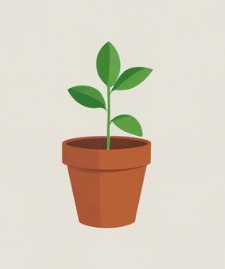The Easy Way to Boost Soil Health and Reduce Food Waste
If you’re using a vertical garden system like the Garden Tower 2 — or any setup with a composting tube — adding worms is one of the smartest things you can do. They help break down kitchen scraps, improve your soil naturally, and make the whole system more productive.
I haven’t always used worms myself, but after researching and talking to other gardeners, I can confidently say this: worm composting is way easier than it sounds.
Here’s how to add worms to your system the right way — and keep them happy and working for you.
🌿 Why Add Worms to a Vertical Compost System?
Worms are little garden powerhouses. Here’s what they do for your system:
- 🌀 Break down food scraps quickly and cleanly
- 💩 Produce worm castings — one of the best natural fertilizers
- 💧 Improve moisture balance in the soil
- 🪴 Enrich plant pockets with nutrients as they move around
It’s a low-maintenance, high-benefit setup once the worms are established.
🐛 What Kind of Worms Should You Use?
The best worms for composting are red wigglers (Eisenia fetida). They thrive in enclosed compost bins and vertical systems because:
- They live near the surface (great for shallow tubes)
- They eat a lot and breed quickly
- They don’t dig deep like regular garden worms
💡 Where to get them: You can order them online, find a local worm farm, or even get a starter batch from a gardening friend.
🕓 When and How to Add the Worms
Wait until your compost tube has a bit of food waste in it — enough to give them something to munch on, but not so much that it’s hot or smelly.
- Moisten the compost tube slightly (like a wrung-out sponge).
- Gently place the worms on top of the compost.
- Cover with a layer of damp shredded newspaper, cardboard, or compost.
- Let them burrow in naturally — they’ll find their way down within a few minutes.
📍 Tip: Keep the tower or tube in a shady area during hot weather. Worms are sensitive to heat.
🍎 Feeding and Caring for Your Worms
Worms aren’t picky — but there are a few things they love (and a few they don’t).
✅ Good food:
- Veggie peels and trimmings
- Fruit scraps (except citrus)
- Coffee grounds and filters
- Crushed eggshells
- Shredded paper or cardboard
🚫 Avoid:
- Meat, dairy, or oily foods
- Onions, garlic, citrus, and spicy scraps
- Anything moldy or rotten
General tips:
- Don’t overfeed — a small handful every few days is fine at first
- Bury scraps under a thin layer of compost or paper to reduce flies
- Keep it moist but not wet
- Add dry leaves or paper if it gets too soggy
🔍 Signs Your Worms Are Happy
A healthy worm tube is easy to spot:
- ✅ No bad smells
- ✅ Scraps disappear slowly
- ✅ Worm castings (dark, crumbly compost) build up
- ✅ Worms are active when you peek inside
If things go wrong, don’t panic. Most problems are easy to fix.
🛠️ Common Problems and Simple Fixes
- Too dry? Add a bit of water — just enough to keep it damp.
- Too wet? Mix in shredded newspaper, cardboard, or dry leaves.
- Smelly? You may be overfeeding. Stop adding scraps for a few days and stir gently.
- Worms escaping? That usually means the bin is too hot, acidic, or lacking oxygen. Check food levels, temperature, and airflow.
🌱 Using the Finished Compost
In systems like the Garden Tower 2, worms naturally spread nutrients to the plant pockets as they move around. But you can also scoop out finished castings and:
- Mix them into pots or raised beds
- Add them to transplant holes
- Brew compost tea for foliar sprays
It’s rich, dark, and packed with beneficial microbes.
🧑🌾 Final Thoughts
Adding worms to your vertical compost system is one of those “set it and forget it” upgrades. Once they settle in, they’ll quietly do their work — feeding your plants and reducing your waste.
I know some gardeners feel unsure at first , but honestly, worms are low effort and high reward. Give them the right conditions, and they’ll pay you back many times over in healthier soil and better crops.
